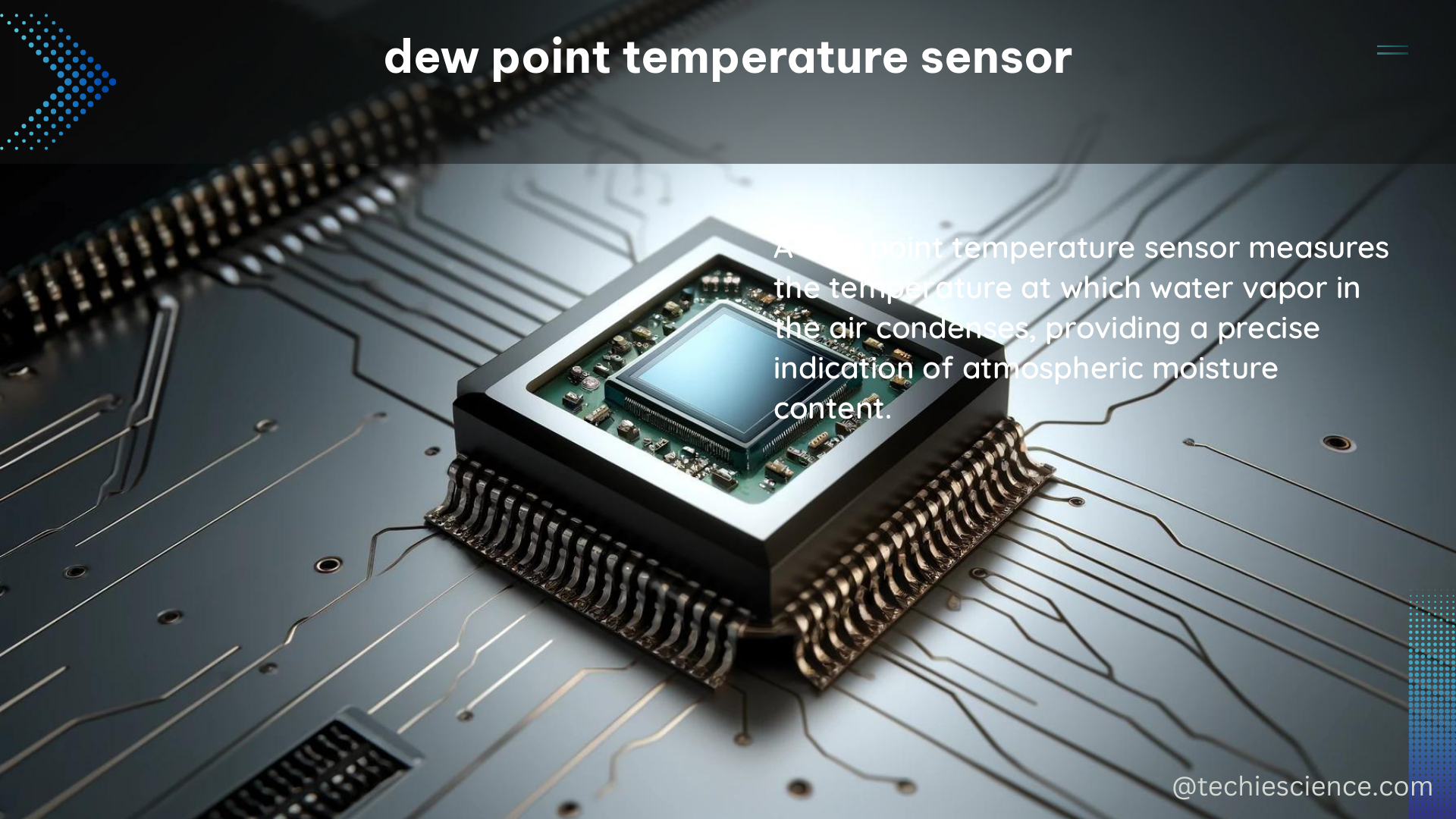The dew point temperature sensor is a critical component in various systems, including HVAC (heating, ventilation, and air conditioning) systems, weather monitoring stations, and industrial processes. It measures the temperature at which air becomes saturated, leading to the formation of dew or frost. This temperature is essential in determining the amount of moisture in the air, which affects comfort, product quality, and process efficiency.
Temperature Range
Dew point temperature sensors typically cover a wide temperature range, often from -100°F (-73°C) to 550°F (288°C). This extensive range ensures versatility across various applications. For example, in industrial settings, dew point temperature sensors may need to operate in extreme environments, such as high-temperature furnaces or cryogenic storage facilities. The ability to measure dew point over this broad temperature spectrum is crucial for maintaining optimal moisture levels and preventing issues like condensation, corrosion, or freezing.
Accuracy

The accuracy of dew point temperature sensors can vary, with some models offering an accuracy of ±2°F (±1.1°C) or better. This level of precision is crucial in applications where exact moisture levels must be monitored and controlled, such as in semiconductor manufacturing, pharmaceutical production, or food processing. Accurate dew point measurements help ensure product quality, process efficiency, and compliance with industry standards.
Response Time
The response time of a dew point temperature sensor is another critical specification. Some sensors have a response time as low as 1 second, ensuring quick and accurate measurements. This rapid response is particularly important in dynamic environments, where moisture levels can change rapidly, such as in HVAC systems or weather monitoring stations. Fast-responding sensors allow for timely adjustments and optimal control of moisture-related parameters.
Repeatability
Repeatability, or the ability of a sensor to produce consistent results under the same conditions, is also essential for dew point temperature sensors. Some sensors offer a repeatability of ±0.5°F (±0.28°C), ensuring reliable and consistent measurements. Consistent dew point data is crucial for trend analysis, process control, and long-term monitoring applications.
Environmental Durability
Dew point temperature sensors are often exposed to harsh environments, requiring robust construction and materials. For instance, some sensors are designed to withstand temperatures up to 250°F (121°C) and humidity levels up to 100%. These sensors can operate in challenging conditions, such as high-temperature industrial processes, outdoor weather monitoring stations, or humid manufacturing facilities. Durable sensors ensure reliable performance and minimize the need for frequent maintenance or replacement.
Power Consumption
Power consumption is a crucial factor, especially in battery-powered or remote applications. Some dew point temperature sensors consume as little as 15mW, ensuring long battery life and reduced energy costs. This low power draw is particularly important for wireless or portable devices, where minimizing power consumption is essential for extended operation and deployment flexibility.
Data Output
Dew point temperature sensors often provide digital or analog data outputs, allowing for easy integration into monitoring and control systems. For example, some sensors offer a 4-20mA output, ensuring compatibility with various industrial control systems, such as programmable logic controllers (PLCs) or building automation systems. This versatility in data output formats facilitates seamless integration and data exchange across different platforms and applications.
Certifications and Standards
Dew point temperature sensors may comply with various industry standards, such as SEMI E77, SEMI E80, and MIL-STD-461G. These certifications ensure quality, performance, and interoperability, allowing users to confidently select sensors that meet their specific requirements. Compliance with industry standards also helps to ensure the sensor’s reliability, safety, and compatibility with other system components.
Conclusion
Dew point temperature sensors offer a wide range of measurable and quantifiable data, including temperature range, accuracy, response time, repeatability, environmental durability, power consumption, data output, and certifications. These specifications ensure optimal performance and compatibility across various applications, from HVAC systems and weather monitoring to industrial processes and beyond. By understanding the technical details and capabilities of dew point temperature sensors, users can make informed decisions and select the most appropriate sensor for their specific needs.
References
- SEMI International Standards: Compilation of Terms, https://www.semi.org/sites/semi.org/files/2020-02/CompilationTerms1218_0.pdf
- Goddard Technical Standard GSFC-STD-7000B, https://standards.nasa.gov/sites/default/files/standards/GSFC/B/0/gsfc-std-7000b_signature_cycle_04_28_2021_fixed_links.pdf
- ENERGY SAVINGS TOOLBOX – An Energy Audit Manual and Tool, https://natural-resources.canada.ca/sites/nrcan/files/oee/pdf/publications/infosource/pub/cipec/energyauditmanualandtool.pdf

The lambdageeks.com Core SME Team is a group of experienced subject matter experts from diverse scientific and technical fields including Physics, Chemistry, Technology,Electronics & Electrical Engineering, Automotive, Mechanical Engineering. Our team collaborates to create high-quality, well-researched articles on a wide range of science and technology topics for the lambdageeks.com website.
All Our Senior SME are having more than 7 Years of experience in the respective fields . They are either Working Industry Professionals or assocaited With different Universities. Refer Our Authors Page to get to know About our Core SMEs.